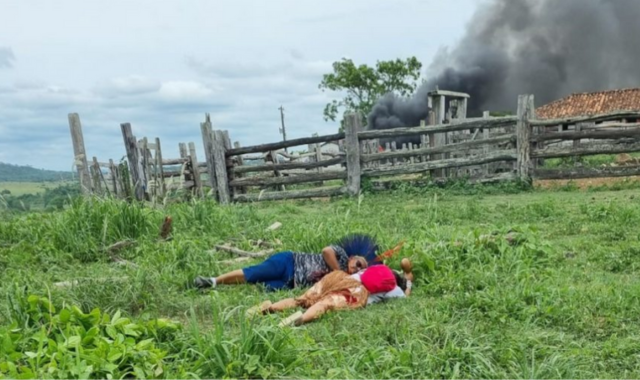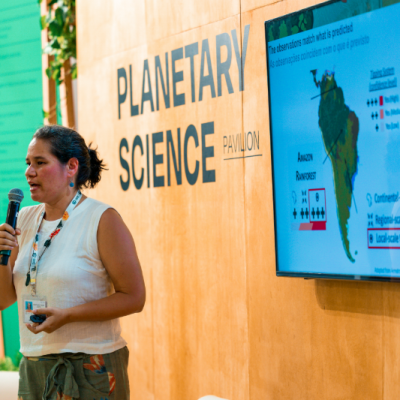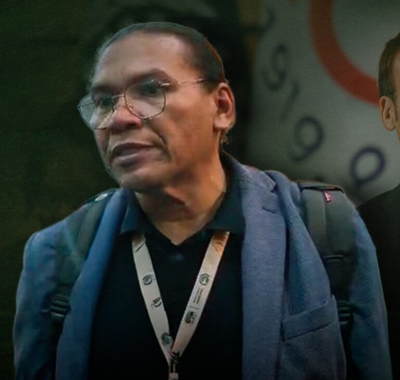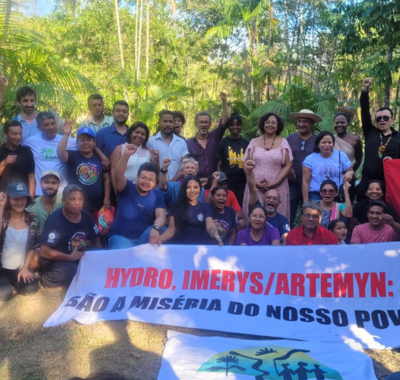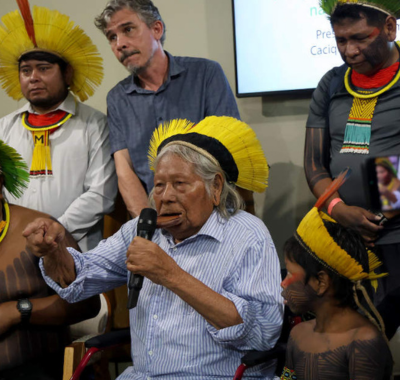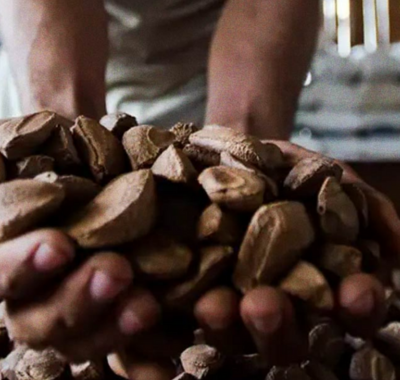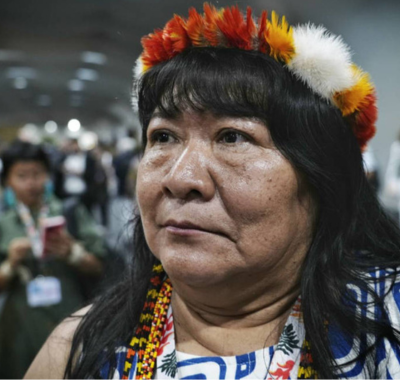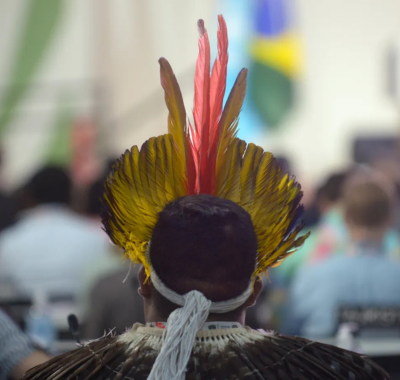The National Human Rights Council is calling on the federal government to act swiftly in response to escalating violence and the paralysis of policies affecting Indigenous Peoples. The council points to the criminalization of land retakings, the militarization of land conflicts, and even rights violations linked to climate-related projects.
By Daniel Camargos
The National Human Rights Council (CNDH) has asked the Lula administration (PT) to declare a state of public calamity in light of the escalating violence against Indigenous Peoples. The recommendation, approved on Friday (7), is yet another pressure on Brazil, host of COP30, the UN Climate Summit, which began on Monday (10).
“There is negligence on the part of the Brazilian government toward Indigenous Peoples, even though it is hosting the COP,” said Lara Estevão, advisor to the CNDH and public interest lawyer for the CPT (Pastoral Land Commission). In the request, the council describes a worsening situation of violence, with murders, threats, evictions, and invasions of Indigenous territories, in addition to persistent failures in health and education services. The conclusions are based on field missions and public hearings held since 2024.
Reports cited by the CNDH also point to the impacts of poorly planned climate initiatives. On a mission to the Enawenê Nawê Indigenous Territory in Mato Grosso, the council identified violations in carbon credit projects implemented without prior consultation, with the risk of restricting land use and affecting ways of life. The CNDH affirms that climate policies cannot violate territorial rights. According to Lara, the recommendation would have been made even if there had been no United Nations conference, but the council chose to release the document before the start of COP30, assessing that the event would give more political and international visibility to the complaints.
The CNDH is an autonomous federal body that monitors and proposes actions to defend human rights in the country. It is made up of 18 representatives from the government and civil society and can issue recommendations, monitor cases of violations, and propose measures to public authorities. Created in 2014, it operates independently, although it is linked to the Ministry of Human Rights.
The document also states that there are systematic violations of rights and omissions by the State in protecting threatened communities and leaders. It also addresses specific requests to the Federal Supreme Court and the National Congress. The deadline for responses is one month.
Violence against Indigenous Peoples increased after the approval of the ‘time frame,’ says council
“The time frame law has been used as a wall that prevents progress,” said Lara. According to the council, a combination of administrative omissions, controversial court rulings, and unchecked police actions has increased the risk to communities, which justifies declaring a state of calamity and adopting emergency measures.
The ‘time frame’ theory limits the right to demarcate Indigenous lands only to Peoples who occupied the territory — or were disputing it in court — on October 5, 1988, the date of the Constitution’s promulgation. In September 2023, the Supreme Federal Court (STF) ruled the theory unconstitutional when judging the case of the Xokleng People, from Santa Catarina. Even so, Congress passed Law 14,701, reintroducing the time frame rule. In 2024, Justice Gilmar Mendes created a conciliation chamber to address the law. The Articulation of Indigenous Peoples of Brazil (Apib) withdrew from the process, arguing that Indigenous rights are non-negotiable.
The reports cited by the CNDH indicate that violence increased after the approval of the time frame. According to Cimi (Indigenous Missionary Council), 208 Indigenous people were murdered in 2023, representing a 15.5% increase over the previous year, when there were 180 deaths. During the same period, homicides in the country fell by 3.4%, according to the Brazilian Forum on Public Security.
The CNDH also recorded 54 reports of violations this year, 15 of which directly involved Indigenous communities, and concluded that the new law has exacerbated territorial conflicts and encouraged attacks in different regions. “Since the approval of the time frame, we have seen an exponential increase in complaints. It is as if there were an endorsement to attack,” said Lara, who coordinates the CNDH’s Permanent Commission on the Rights of Indigenous Peoples, Quilombolas, and Traditional Communities.
Violations of Indigenous rights occur from north to south across Brazil
In Paraná, the CNDH recorded threats, persecution, and attempted murders against the Avá-Guarani People. Shortly after a visit by the council, an Indigenous man was found decapitated. In Mato Grosso do Sul, reports point to recurring attacks on Guarani and Kaiowá communities, with violent evictions and the use of police force. The council reports joint action by public officials and private groups in operations to repress land retakings.
Reporter Brasil revealed that, in October, the Military Police’s riot squad escorted farmers’ tractors and fired rubber bullets and tear gas at Indigenous people from the Guyraroká land retaking in Caarapó, Mato Grosso do Sul. The clash prompted the federal government to send an emergency mission to the territory after reports of collective despair and suicide threats among the Guarani and Kaiowá Peoples.
In southern Bahia, the recommendation compiles information from a mission that monitored Operation Pacify in the Barra Velha do Monte Pascoal and Comexatibá Indigenous Lands, home to the Pataxó People. The National Human Rights Council (CNDH) reports mass arrests, intimidation of families, and destruction of property, and calls for accountability of the authorities involved. For the council, there is criminalization of land retakes and militarization of land conflicts.
This report was produced by Repórter Brasil, through the Collaborative Socio-environmental Coverage of COP 30. Read the original report at: https://reporterbrasil.org.br/2025/11/cop30-cndh-recomenda-decreto-de-calamidade-indigena/

